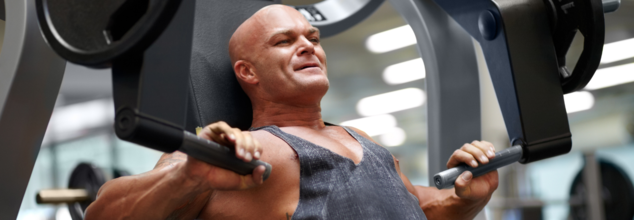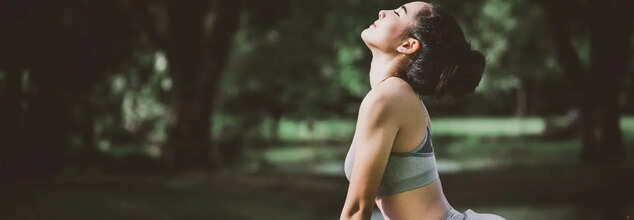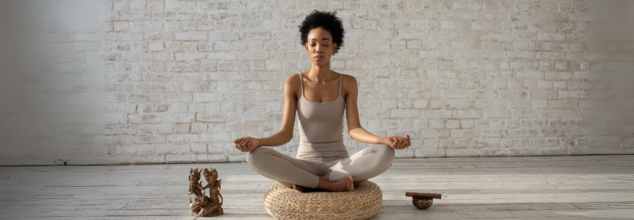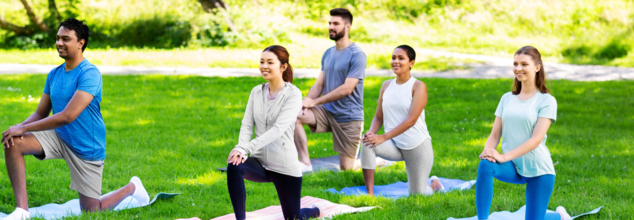
(Credit-Canva)
Does Muscle Building Make You Less Flexible?
Exercising plays an important role for building a healthier body. There are many different aspects of exercising, whether it is strength and endurance or speed and energy- which exercise you do depends on which aspect you decide to work on. If you are looking to build your endurance and muscle density, then you will be advised to do work on weights. However, one doubt remains, whether or not strength training makes your muscles less flexible?
Experts explain that movement and flexibility are important for doing everyday tasks without pain. But the idea that strength and flexibility can't coexist is a common misunderstanding because you can improve your strength and durability at the same time.
How Can Strength Training Improve Flexibility?
When you lift weights or use resistance, you’re essentially stretching your muscles while they’re under load. During the part of the lift where you lower the weight, your muscles stretch. When you lift the weight, they shorten. This stretching under load is a key part of how strength training improves flexibility. Also, research shows that the stretched part of each exercise is where your muscles grow the most. This means you naturally focus on stretching during strength training. As you get stronger, you also gain better control over your body in different positions. This control lets you relax more, which helps you move more freely.
The idea that strength reduces flexibility likely comes from a few places. Many people just assume that strong muscles are tight muscles, but that’s not always true. Sometimes, people who focus a lot on lifting weights don't pay much attention to stretching, so they might seem less flexible. Also, there’s the image of bodybuilders who look very muscular and stiff. But remember, just because someone looks a certain way doesn't mean it's true for everyone. Plus, older ideas about exercise used to say that lifting weights made you less flexible. While coaches now know this isn't true, many people still believe it.
Why are Strength and Flexibility Equally Important?
While strength training itself won't make you less flexible, not moving your muscles through their full range of motion can cause them to become shorter over time. This is called adaptive shortening. For example, if you only lift weights in a small range of motion, your muscles might get used to that limited movement. To avoid this, it’s important to do strength exercises through a full range of motion, especially focusing on the stretched part of the movement. This might mean using lighter weights so you can move properly. It’s better to focus on good form and full movement than just lifting the heaviest weight possible.
Both strength and flexibility are important for living a healthy and active life. You don’t have to choose one over the other. Strength training can actually improve your flexibility, and being flexible won’t make you weak. As we get older, we naturally lose some strength and flexibility. But we can slow this down by working on both. Doing a mix of strength and flexibility exercises will help you stay active and independent for longer. Physical therapists can help you create a balanced exercise program that includes both strength and flexibility training.

Credit: Canva
These 7 Yoga Poses Can Boost Stamina In Runners
While yoga and running are two different forms of exercise, yoga can be a game-changer for runners, helping to improve flexibility, build strength, and prevent injury. Certain poses are especially beneficial for runners, offering both preparation before a run and recovery afterwards. Whether you are a marathon runner or a casual jogger, incorporating these poses in your routine can prove to be beneficial.
1. Bhujangasana (Cobra Pose)
Cobra Pose is a great way to stretch and strengthen the lower back and core. To perform this pose, lie on your stomach with your palms placed under your shoulders. Inhale as you lift your upper body off the mat, keeping your lower ribs grounded. Maintain a neutral neck and gaze down. Exhale to lower your body back down. This posture helps to open up the chest and strengthen the spine, which is essential for a runner’s posture.
2. Uthith Dwipadasana (Both Legs Raised Pose)
This pose targets your core muscles, helping to stabilize and support your running form. Lie on your back and, on an inhale, raise both legs to about one and a half feet off the floor. Exhale and lower your legs to hover just three inches above the ground. You can alternate between lowering and raising your legs in this position. This movement activates the abdominal muscles, improving balance and endurance.
3. Utkatasana (Chair Pose)
Chair Pose is fantastic for building lower body strength, particularly in the quads, hamstrings, and glutes, which are all critical for running power. Stand with feet hip-width apart, hands extended forward at shoulder level. Inhale and raise your heels off the ground, then squat down, keeping your back straight and thighs parallel to the floor. Hold the position for as long as possible while breathing normally. This pose helps improve stamina and balance, both key elements for runners.4. Chalit Naukasana (Boat Pose Variation)
A variation of the traditional Boat Pose, this exercise engages the core and helps to increase flexibility and stability. Lie on your stomach and extend your arms in front. Lift both your arms and legs off the floor, creating a see-saw motion as you sway up and down, alternating between lifting your hands and legs. This dynamic movement strengthens the core and improves overall balance, which is essential for maintaining a steady running stride.
5. Chalit Pavanmuktasana (Wind-Releasing Pose Variation)
This variation of the Wind-Releasing Pose is excellent for releasing tension in the lower back and hips. Lie on your back, inhale, and lift both legs in the air. Exhale, grabbing your legs with your hands and pulling them gently toward your chest. Perform a gentle swaying motion to further release tightness and improve circulation in the lower body. This pose aids in digestion and can help prevent post-run muscle stiffness.
6. Viprit Paschimottanasana (Reverse Seated Forward Bend)
This pose opens the chest and stretches the hamstrings, providing a counter-stretch after a run. Sit with your legs extended in front and place your palms on the ground behind you. Inhale as you lift your hips toward the ceiling, keeping your palms and heels grounded to support the lift. This pose strengthens the arms, shoulders, and core while stretching the entire posterior chain, which is especially beneficial for post-run recovery.
7. Shavasana (Corpse Pose)
Shavasana, or Corpse Pose, is the ultimate recovery pose. Lie on your back with your legs extended and arms at your sides. Close your eyes and focus on your breath, allowing your body to relax completely. Shavasana helps to reduce stress, lower the heart rate, and promote a sense of calm—essential for optimal recovery.

(Credit-Canva)
Feeling Anxious? Here’s 20 Minute Yoga Routine That Can Help You Feel Grounded
While many people may not know, yoga benefits both mind and body wellness. It helps us center ourselves and keep us in sync with our mind and body. Many studies have shown that yoga has a positive effect on mental health issues like depression, mood swings and anxiety. A 2018 review published in the Depression and Anxiety journal explained that yoga can be a safe and effective intervention for individuals with elevated anxiety levels.
Another 2018 study done by the International Journal of Preventive Medicine, showed that 52 women who had participated in the study experienced decreased levels of stress and anxiety after just 12 sessions of regular hatha yoga practice. Here are some grounding yoga exercises that can help you feel better in just 20 minutes
Reclining Twist (Supta Matsyendrasana)
Lie on your back and hug your knees to your chest. Then, gently lower both knees to one side, keeping your shoulders flat on the floor. Extend your arms out to the sides. This gentle twist helps your body relax and can calm your nervous system as you feel supported by the ground. Breathe slowly here.
Cat and Cow (Marjaryasana and Bitilasana)
Start on your hands and knees. As you breathe out, round your back like a cat, letting your head hang. As you breathe in, arch your back and lift your chest and gaze gently. This flowing movement connects your breath with your body, helping to quiet your mind and ease tension. Repeat slowly.
Child’s Pose (Balasana)
From hands and knees, bring your big toes together and widen your knees slightly. Sit your hips back towards your heels and fold your upper body forward, resting your forehead on the floor. Let your arms extend forward or rest alongside your body. This pose encourages stillness and helps release tension in your body.
Downward-Facing Dog Pose (Adho Mukha Svanasana)
From hands and knees, lift your hips up and back, forming an upside-down V-shape. Keep your knees slightly bent at first. Press firmly into your hands and feet, stretching your whole body. Focus on your breath and notice any tension you might be holding. This pose directs your attention inward.
Standing Forward Bend (Uttanasana)
Stand with your feet hip-width apart. Gently bend your knees and fold forward from your hips, letting your head hang heavy. You can hold onto opposite elbows or let your hands rest on the floor or blocks. This stretch helps release tension in your lower body and can help you tune into your inner feelings.
Mountain Pose (Tadasana)
Stand tall with your feet together or hip-width apart and your arms relaxed by your sides, palms facing forward. Imagine a gentle lift from the crown of your head. This pose might look simple, but it helps you find balance and awareness throughout your entire body. Notice where you might be holding tension and try to release it.
Wide-Legged Standing Forward Bend (Prasarita Padottanasana)
Stand with your feet wide apart, facing the long edge of your mat. Hinge forward from your hips, bringing your hands to the floor or blocks beneath your shoulders. Let your head hang and feel the stretch in your legs. Notice where you can relax in your upper body as your lower body works to balance you.
Easy Seat (Sukhasana)
Sit comfortably cross-legged on the floor. You can use a cushion or block under your hips for more support. Rest your hands gently on your knees or in your lap. Allow your eyes to close and bring your attention to your breath. This simple seated pose helps you feel any subtle shifts in your body and energy after your practice.

Summer Yoga Poses That Keep You Energized Throughout The Day
Yoga is a full body exercise that consists of poses that help your body function to the best of its abilities. While we know yoga can help us build immunity, muscle mass and even make our mental health stronger, it can also help us feel energized. Unlike other common forms of exercises, which drain your energy, yoga can help you feel energized. This is especially needed as summer is upon us and nothing drains your energy more than the heat.
The reason why yoga can energize you is because it focuses on your breathing and slow movement, so instead of short bursts of energy being expended, you are using your stored energy in a uniform manner. John Hopkins Medicine explains that yoga can boost your mental and physical energy, as well as make you feel brighter.
Paschimottanasana (Seated Forward Bend)
Start sitting tall with legs straight out. Gently lean forward from your hips, keeping your back as straight as you can. Reach your hands towards your feet. With each breath out, try to fold a little deeper. This stretch helps calm your mind and stretches your back and hamstrings, which can feel great after sitting for a while during summer travels. Hold and then slowly sit back up.
Parivrtta Janu Sirsana (Revolved Head-to-Knee Pose)
Begin sitting with legs wide. Bend one knee, bringing that heel close to your body. Turn your upper body towards your bent knee. Then, lean sideways towards your straight leg, reaching your hand towards your foot. Extend your other arm overhead. This pose gives a nice twist to your spine and stretches your sides and shoulders, feeling refreshing on a warm day. Repeat on the other side.
Utthan Pristhasana (Lizard Pose)
From a lunge, bring both hands inside your front foot. Lower your hips towards the floor, feeling a stretch in your hips and thighs. You can stay on your hands or lower onto your forearms for a deeper stretch. Keep your spine long and your gaze soft. This pose is great for opening up tight hips, which can be helpful if you're doing more walking or outdoor activities in the summer.
Vasisthasana (Side Plank Pose) variation
Start in a plank position. Roll onto the outer edge of one foot and place the other foot in front for support. Lift your top arm towards the ceiling, opening your chest. Keep your body in a straight line. This pose strengthens your core and arms, improving balance – useful for all those summer adventures. Remember to do both sides to keep your body even.
Dhanurasana (Bow Pose)
Lie on your stomach. Bend your knees and reach back to grab your ankles. As you breathe in, lift your chest and thighs off the floor, like a bow. Look straight ahead. This pose stretches the front of your body and strengthens your back, which can feel really good after activities like swimming or hiking. Hold briefly and then gently lower down.
Utkatasana (Chair Pose)
Stand tall with your feet together. Reach your arms overhead and bend your knees as if you're sitting in a chair. Keep your chest lifted and your weight in your heels. This pose builds strength in your legs and core, preparing you for more active summer days. Imagine reaching for the sun as you hold this pose. Slowly straighten your legs to come out.
Parsva Bakasana (Side Crow/Crane Pose)
Start in a low squat. Twist your upper body to one side and place both hands on the floor. Lean forward, bending your elbows. Rest your outer thigh on your upper arm and try to lift your feet off the ground. This is a more challenging pose that builds arm strength and balance, offering a fun way to challenge yourself during the summer. Take it slow and be patient.
© 2024 Bennett, Coleman & Company Limited

